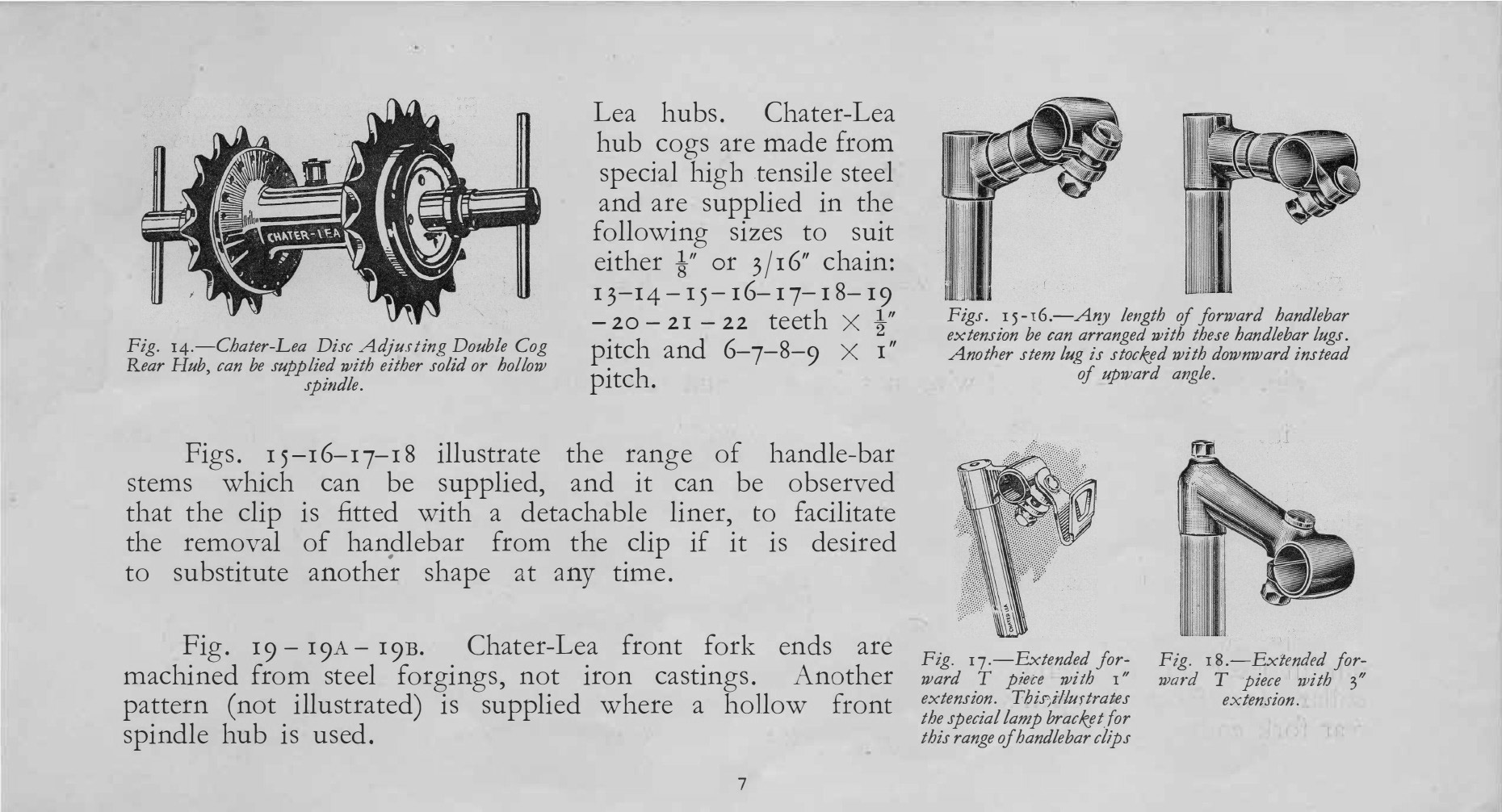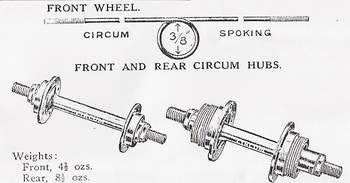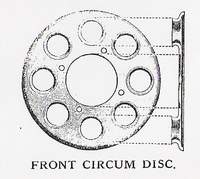Constrictor Hubs - 1950s
Posted: Thursday 11th June 2020
Constrictor hubs were marketed both pre- and post-war by the Constrictor Tyre Company Ltd. of Nursery Lane Works, London E7. They sold both alloy and steel hubs which were manufactured for them, some by BSA in the UK whilst others were imported from the Continent. These hubs would of course all been stamped as ‘Constrictor’.
In the 1955/56 Constrictor catalogue they advertised both Viper hubs and Conloy hubs, defining the Viper as ‘suitable for derailleur gears’. In the image below one can just make out the oil nipples on the end of the axles.
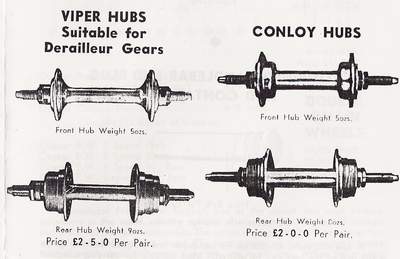

The catalogue goes on to say:
“Viper and Conloy hubs are precision made lightweight types, with standard size flange. The Viper has a steel barrel with Conloy flanges; one side is screwed for standard cog and lock ring and the other for freewheel block. The spindles are drilled up each end and are turned in form of oil nipple. Oil can be injected straight into the bearings. The Conloy hub is turned from solid bar. The rear is screwed for double cog only. The spindles are the same as fitted to the Viper.”
It should be noted that the use of oil to lubricate hubs was probably confined to really keen racing enthusiasts as it was more common to use grease for hubs and bottom brackets. The attraction of oil was the reduced friction it offered but the downside was that the bearings would need regular lubrication, probably every week for the keen owner.
Perhaps it should be said that ‘Conloy’ refers to the ‘special’ Conloy alloy used to make Constrictor components.
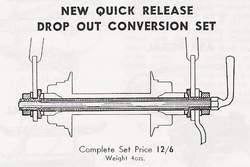
The same catalogue also lists their ‘New Quick Release Drop Out Conversion Set’.
It goes on to say: “A form of wheel drop out that holds the wheel securely and without fear of slip. The existing hub cones, nuts and washers, etc. are retained but the spindle is replaced with a hollow one. Carrier slides are fitted to the fork ends and a steel skewer is passed through the whole and locks the wheel in position. A derailleur can be fitted and this remains undisturbed when the wheel is removed. The wheel also goes back automatically into its correct position and does not need centralising. Finished in polished chrome and cadmium.”
The catalogue doesn’t make clear if this conversion can be used with all makes of hub or whether it will work only with their own hubs.
I also have an undated technical sheet detailing ‘Constrictor Circum Spoking’ but I have never seen these hubs or a wheel built using this method.
The sheet says: “CIRCUM is our new and patented device for wheel building. Having two spokes in one length, you do away with the trouble of having the heads broken off and the wheel therefore getting out of truth. Each double length of Spoke has a 3/8” diameter circle in the middle and this is placed round bumped or protruding collars of which there are ten on either side of a Rear wheel. This enables one to use a smaller Spoke and the tangent comes further along the Spoke and when tied and soldered as we do all our wheels, you get the most rigid wheel possible. For this season we have designed special Hubs both in Alloy and Steel, so that our flanges or discs can be riveted on and we shall fit and supply complete.
We were anticipating when we first patented and introduced this new method of Spoking that we should adapt it to an ordinary type of Hub, but we prefer to go along with a complete unit for this season. With the Front Hub, the flange is not so wide, as from our experience of experiments, a rolling wheel does not want this rigidness and at the same time it gives us better alignments of spoking.”
The double-spokes were sold in 15, 16 and 17 gauge.
The Constrictor Asp rims, both HP and Sprint, were the first choice for many of the top Clubmen of the era but many were built with Harden or Airlite hubs. For some reason the Constrictor hubs were not so popular and for this reason there are not many of them in circulation today. Constrictor also produced their own wingnuts which again are very rare.
I guess a collecter’s dream could be to have a classic frame equipped wholly with Constrictor equipment including an Osgear plus D.C.W front changer, hubs, rims, wingnuts, lamp bracket, toe clips and straps, pedals, honking rubbers and the combined handlebar end plug and container (sold with rubber solution, patches and sand paper). It would be too much though to hope to find usable Contrictor tyres or tubulars to complete the showpiece.
Posted: Thursday 11th June 2020
This article appears in the following categories.
Upcoming Events
Whether you are looking for a gentle social meet up, or a 100-mile ride browse the community’s upcoming events and plan your next weekend outing.
